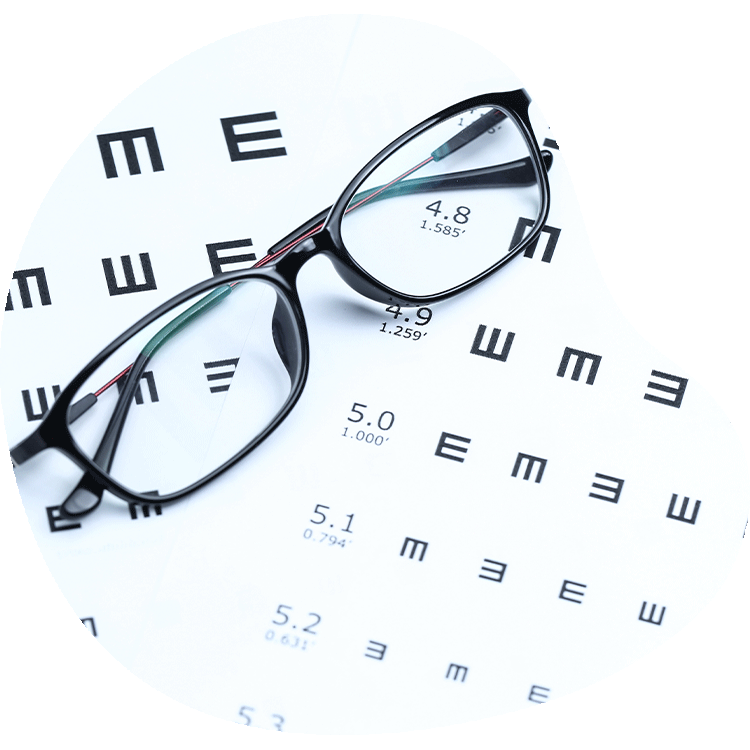Myopia means short-sightedness and is an ametropia or a refractive error, ie the light rays of an object are not bundled correctly on the retina but in front of it. The word has its roots in Greek and means “twilight” or “contraction”. Because squinting your eyes improves visual acuity in the short term. The eyelids act like a natural aperture that allows you to increase the depth of field.
Correct a myopia
There are various correction techniques for myopia. As a rule, the first method is to compensate with lenses that allow the focus to be transferred to the retina, allowing the images to be seen sharply. Correction is carried out not only ophthalmologically, that is, with glasses, but also with contact lenses (soft, rigid), sometimes with training methods, in which an optician can recommend exercises to do at home (vision training), and finally with laser surgery. Depending on the degree of myopia and individual needs, one correction method may be better than another.
Have myopia operated in Turkey
Surgical correction is called refractive surgery—usually with a laser that changes the curvature of the cornea, reducing the cornea’s refractive power and correcting myopia. LASIK is one of the most commonly used methods. Another surgical treatment is to replace the lens of the eye with a new, adapted lens.

LASIK, short for laser in situ keratomileusis, is a popular surgical procedure to correct vision for myopia. Our experienced surgeons in Turkey safely apply this surgical procedure. It is one of several surgical techniques that reshapes the cornea (the transparent front part of the eye) so that the light passing through it is correctly focused on the retina, which is located at the back of the eye.

The LASIK eye laser offers many advantages:
The LASIK laser can correct ametropia that cannot be corrected with glasses. Highly individual LASIK treatments are possible, adapted to the patient’s cornea.
Step 1: Analysis of the lens shape
A “fingerprint” of the eye is taken before the lens is corrected. For this purpose, a beam of light is directed onto the retina of the eye. The light reflected from the lens, pupil and cornea is recorded by a sensor that measures the irregularities in the reflected light. In this way, an accurate three-dimensional map of the cornea is created. The visual features are shown in detail. With this analysis, poor eyesight can be corrected and adjusted even more precisely during the laser treatment.
Step 2: Open cornea (microkeratome)
After the scan, a small flap is cut. The patient’s eye is given a local anesthetic and then a fixation ring may be placed over the eye to stabilize it. A small incision is made with a precision knife (microkeratome). The top layer of the cornea (flap) is peeled off with a precision instrument so that the laser treatment can take place. Once the fixation ring is removed from the eye, the patient can be placed under the laser device.
Step 3: Correction of the aberrations of the eye
The individual data from the analysis of the eye shape is then used for the laser treatment. The surgeon enters the data into the laser software and uses it to adjust the LASIK laser. When removing tissue, the laser takes the condition of the cornea into account. The wavefront laser not only eliminates aberrations, such as nearsightedness or farsightedness, but also other irregularities. Thanks to the precise analysis, the LASIK laser can be used for precise modeling of the cornea.
Step 4: Flap unfolding (corneal flap)
After the laser treatment of the eye, the open eye is “fused” with a flap. This is the top layer of the cornea in which the opening was created with a microkeratome at the beginning of the treatment. After the eye has been thoroughly cleaned and rinsed, it is now closed like a “door”. The flap is sucked in and attached to the cornea to protect the eye. The flap even serves as a natural wound dressing after laser surgery. Usually, within a few hours after LASIK laser surgery, the patient has full vision again and can then see without glasses or contact lenses.